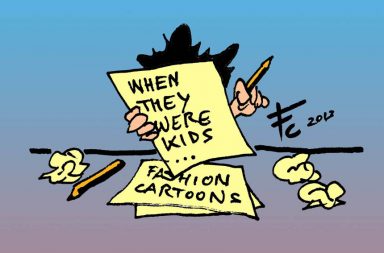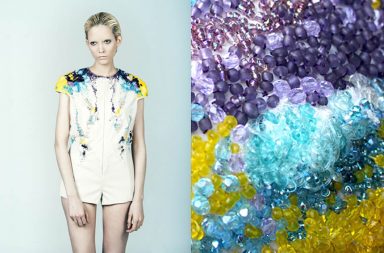The Fashion world is in an age where sustainability and the concept of slow-fashion are really taking off. The public demands to know where the materials in their clothes come from while adapting to new ways of making fashion.
Environmental awareness and ecological good practices have also made this new trend necessary for the fashion world, which has taken many proactive steps to avoid being left behind. Many companies these days are focusing more of their efforts on researching new materials and bringing technology into the mix to create the perfect textile.
From So Catchy! Where Fashion Begins, today we bring you 5 innovative textiles that define sustainability and technology.
Plastic as fabric
Reusable clothing made from recycled plastic from milk cartons or individually-wrapped cheese slices. The idea is to come up with different textiles with an eye on creativity and design to create and recreate different articles of clothing. One of the best examples of this is the designer Jessica Pullo’s project, Biótico.
Zero Waste and regenerative fabrics
The zero waste trend began its rise in 2015 and is now widely used by designers who wish to avoid wasting fabric. One of the most famous ancestors of this trend is the Japanese kimono which uses straight cuts to avoid wasting such expensive material. As the practice has been brought back to use, we’ve seen more and more designs made from one complete piece of fabric, creating authentic works of art without any waste.
As for the regenerative fabrics, these are designs that are made from leftover residue to create new materials. A leader in the field is Econyl which uses nylon from rugs, clothes and fishing nets to elaborate their pieces.


Designs by Whip Appeal of Sweden
Pineapples
Piñatex is a fabric pioneered by the Spanish firm Ananas Anam, and is made from pineapple fiber from the Phillipines. Their objective is to create a fabric that is completely natural and sustainable, as the material is biodegradable and can be turned into compost.


BASS Pineapple sneaker by Mats Rombaut
Alternative leather
We’ve talked about this topic before and with good reason; there a number of innovations taking place in the world of alternative leather. One of the best examples is Muskin. Discovered by Grado Zero Space, Muskin is a leather obtained from fungi that looks similar to leather and uses a completely chemical free tanning process.

Intelligent textiles
Nanotechnology and thermoregulation are names that we’ll be hearing more of in the future of textiles. Thermoregulating microcapsules allow clothing to find a balance between the heat generated by the body and the surrounding environment. They are used mainly in sports fabrics where differences in body heat and the environment can effect performance.
At the same time, nanotechnology is being used to create fabrics with an infinite number of properties including fire resistance, stain resistant fabrics and even self-cleaning ones.
Translation and layout by Michael Padilla




